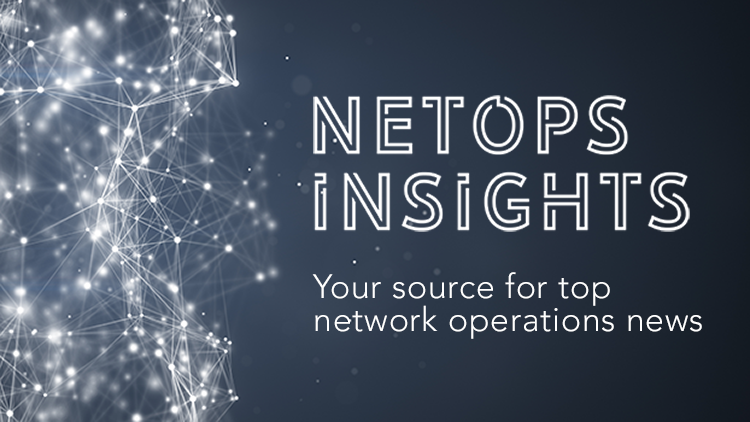Defining NetOps, Reshaping Networking & The SD-WAN Takeover

Week of September 1st, 2019
Expect Big Changes as Software Eats Networking
Software is eating networking, and it’s about time. Software-defined networking, network virtualization, software-hardware disaggregation, and intent-based networking are creating a nimbler network for multi-cloud. They’re changing the experience of networking end users and making new operating models possible.
Eight Disruptive Forces Reshaping Networking
IP networking hasn’t changed since the mid ’90s. For the first time in 25years, as software-defined networking (SDN) takes off, disruption is occurring in the networking field. SD-WANs are a start, but they’re more of an evolution of IPSec tunneling versus a full disruption. Unlike chemistry or the hard sciences where there are fundamental rules, the architecture guidelines on how to design, build, and operate a network changes every 10 years or so. Below are eight disruptive changes in how networks will be built in the future.
Why SD-WAN Is Taking Over Enterprise Networks
One of the fastest growing enterprise networking technologies, SD-WAN can simplify network management and optimize connections to cloud services. Leased-line and MPLS connectivity can serve your head office well, but for small branch offices and remote workers using SaaS applications the public internet is often the only option. They could be customer service agents working from home, first responders on scene, or travelling executives all using latency-sensitive voice and video services – something traditional enterprise WANs struggle to support.
What Is NetOps?
Although it may be one of the more abstract terms in the tech industry, NetOps is an important area that’s relevant to a host of roles within businesses, from app developers to network engineers. NetOps stands for “network operations”, but, in truth, it represents much more than the sum of these words. This trend intersects with others like DevOps, automation, and software-defined networking, but essentially amounts to the ideas and activities involved in running communications networks.
AT&T On Multi-Cloud Strategy And Why It’s Important For 5G
On the heels of a series of cloud-related announcements, AT&T’s Chris Rice, senior vice president of network cloud and infrastructure, pulled the lens back and explained the company’s larger strategy around cloud computing, automating network management processes and how that relates to 5G.
What We Took Away From VMworld 2019
It’s all about consistency. VMware’s new solutions aim to help organizations migrate, modernize and manage workloads across clouds, data centers and edge locations with consistent hybrid cloud infrastructure and operations.
From 5G network automation to building a ‘self-operating network’
Operators around the world are rolling out commercial 5G services with a current focus on delivering an enhanced mobile broadband experience to consumers with compatible devices. But, as the technology set matures and the specifications for Release 16 and beyond are fleshed out, the latest generation of cellular will support a massive number of connected things while dynamically providing bespoke network slices connected users, both people and things, to any type of cloud-based application.
Closer Look: Cloud WAN, SD-WAN, And Cloud-Native Networking
Cloud-native networking is all about providing access to the never-ending pools of resources that now reside in the cloud. While we hear the term cloud computing pretty often and know what it means, cloud-native networking sometimes sounds unfamiliar at best. This is because while most of us are used to the network appearing out of thin air to provide connectivity, what we don’t see are the wheels turning behind the curtains that make this possible.
Industry Voices—Doyle: MSPs Will Take On A Bigger Role For SD-WAN
The widespread adoption of SD-WAN continues to impact the more than $40 billion market for managed business services. Managed service providers (MSPs) will play a growing role in delivering managed SD-WAN services, especially with medium and small organizations or those with lean IT staffs. SD-WAN providers need to improve their platforms to better deliver SD-WAN as a service, ease integration with MSPs, and to aggressively promote MSPs as channel partners.
Secure Software-Defined Networking For Manufacturing/Supply Chain Transformation
There are a number of unique security and networking challenges that will continue to arise as manufacturing IT environments integrate internet of things (IoT) devices, 5G communications technology and multi-access edge computing capabilities. While there are distinct advantages that these technologies bring to manufacturing operations, if only traditional network technologies are accounted for, there will be gaps in an organization’s ability to support and secure high-velocity, high-demand supply chain operations.
Multiple Networking Options: Cisco Brings Cloud Innovation On-Premises
As Cisco Systems Inc. talks with its customers, it is getting a clear picture of information-technology preferences and an overwhelming sentiment in favor of a networking environment that mixes cloud computing with on-premises operations. One Cisco executive recently noted in an interview that 90 percent of its customers intended to deploy a multicloud structure while keeping the Kubernetes control plane on-prem.
